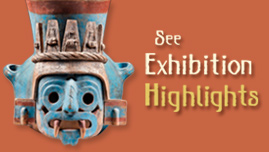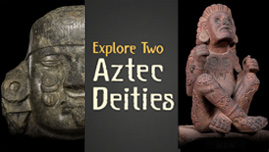| Exhibitions | ||
| Collection | ||
| Education | ||
| Research and Conservation | ||
| Publications | ||
| Games | ||
| Public Programs | ||
| About the J. Paul Getty Museum | ||
Press Kit |
||
| Museum Home
|
March 24–July 5, 2010 at the Getty Villa
|
The Aztec Pantheon and the Art of Empire explores the parallels between two great empires—the Aztec and the Roman. Celebrating the 2010 bicentennial of Mexican independence, the exhibition illuminates a dialogue between the New and Old Worlds that has shaped the modern contours of Mexico.
|
|||||||||
|
Spanish exploration and colonization in the Americas coincided with the Renaissance rediscovery of Europe's Greco-Roman past. To many Spaniards, the Aztecs were the Romans of the New World. An unprecedented look at this convergence of cultures, The Aztec Pantheon and the Art of Empire considers the Spanish conquest of Mexico, European attempts to interpret Aztec civilization through the lens of classical culture, and comparative approaches to the monumental art of empire. The exhibition includes masterpieces of Aztec sculpture from the collections of the National Museum of Anthropology and the Templo Mayor Museum in Mexico City, as well as the Florentine Codex, one of most valuable chronicles of Aztec history and culture, which returns to the Americas for the first time in more than four centuries. |
|||||||||
|
This exhibition is organized by the J. Paul Getty Museum in collaboration with CONACULTA-INAH. The exhibition is part of Los Angeles's celebration of the 2010 bicentennial of Mexico's independence and the centennial of the Mexican Revolution. |
|||||||||
|
|||||||||||||||||||||




